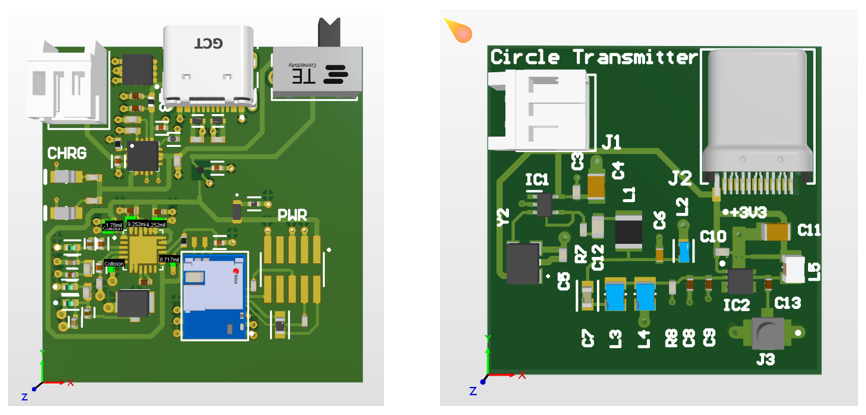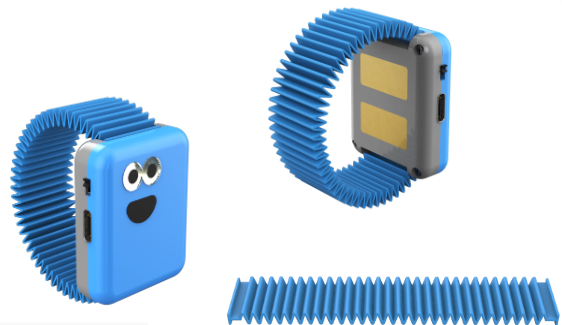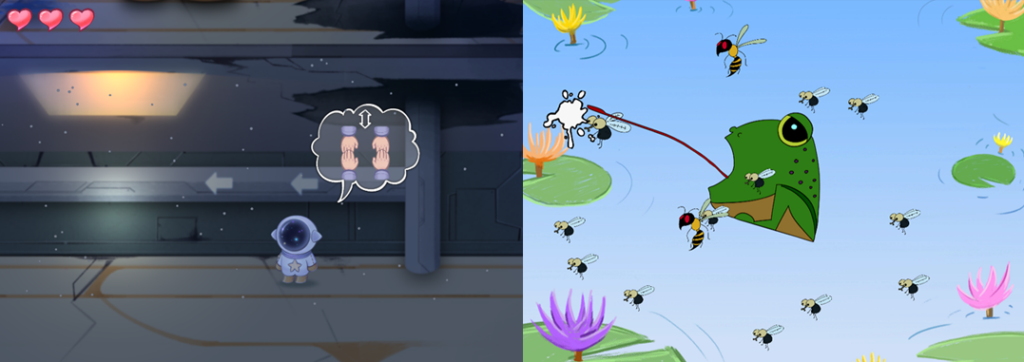
Peer interactions are vital to children as they provide opportunities for children to test hypotheses about language without scaffolding from adults and contribute to the development of friendships. One means of prompting peer interactions is through the use of collaborative digital gaming. A unique approach to interactive play is incorporating the use of a wearable technology that capitalizes on touch via skin-to-skin contact through Human Body Communications (HBC). Using wearables and smart fabrics in collaborative gaming may redefine the design and use of wearable electronics for children with developmental disabilities such as autism.
The platform behind Project Circle is comprised of 3 parts: (1) the sensors, (2) the wearable, and (3) the software.
Sensors

The transmitter creates a high frequency signal that is sent through the body via an electrode on the underside of the wearable. A receiver worn by the other player measures the frequency and strength of the signal to determine whether a touch has occurred. This status is sent to the gaming device (typically an iPad) over Bluetooth where it is understood as input. Our platform currently recognizes 3 discrete inputs: hands touching on side-1, hands touching on side-2, hands touching on both sides at the same time. Future work on our sensors will explore intensity and duration of touch.
Wearables

The wearable component of Project Circle is designed to capitalize on the value of touch via skin-to-skin contact; it should be adaptable to wrist sizes of children and adults of varying ages; it should be easy to take on and off; it should be attractive and children should want to wear it; it should visibly communicate touch status; it should be comfortable; it should be small and light while being big enough to house the electrode/battery/transceiver; it should be easy to clean in clinical settings; and it should communicate which player wears which sensor on which wrist.
Software

The strength of collaborative games is that they distribute activities between players, and encourage them to work together to achieve a common goal. They promote social interaction, cognitive development, and can even improve the quality of personal relationships. All of these benefits transfer directly to both children with disabilities and the fully abled and have the potential for impact that goes beyond the child and extends into the community.